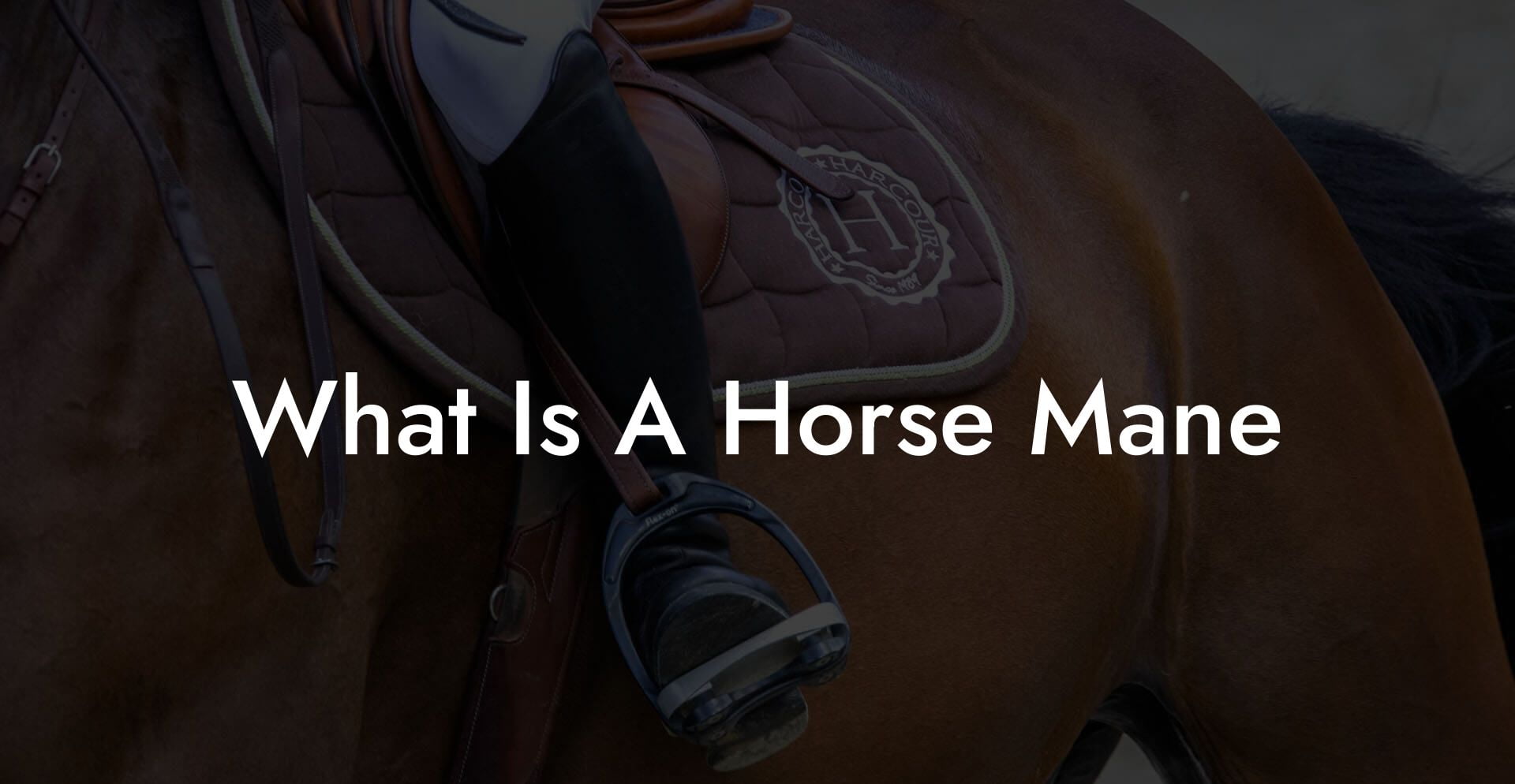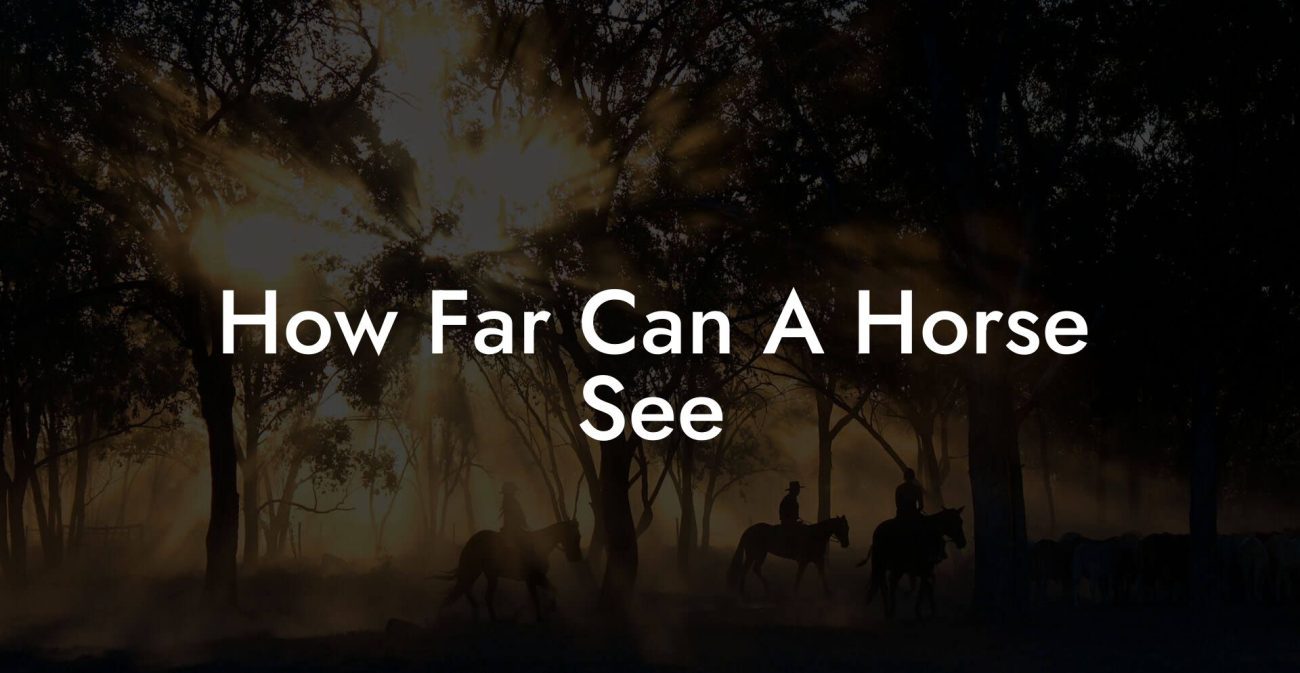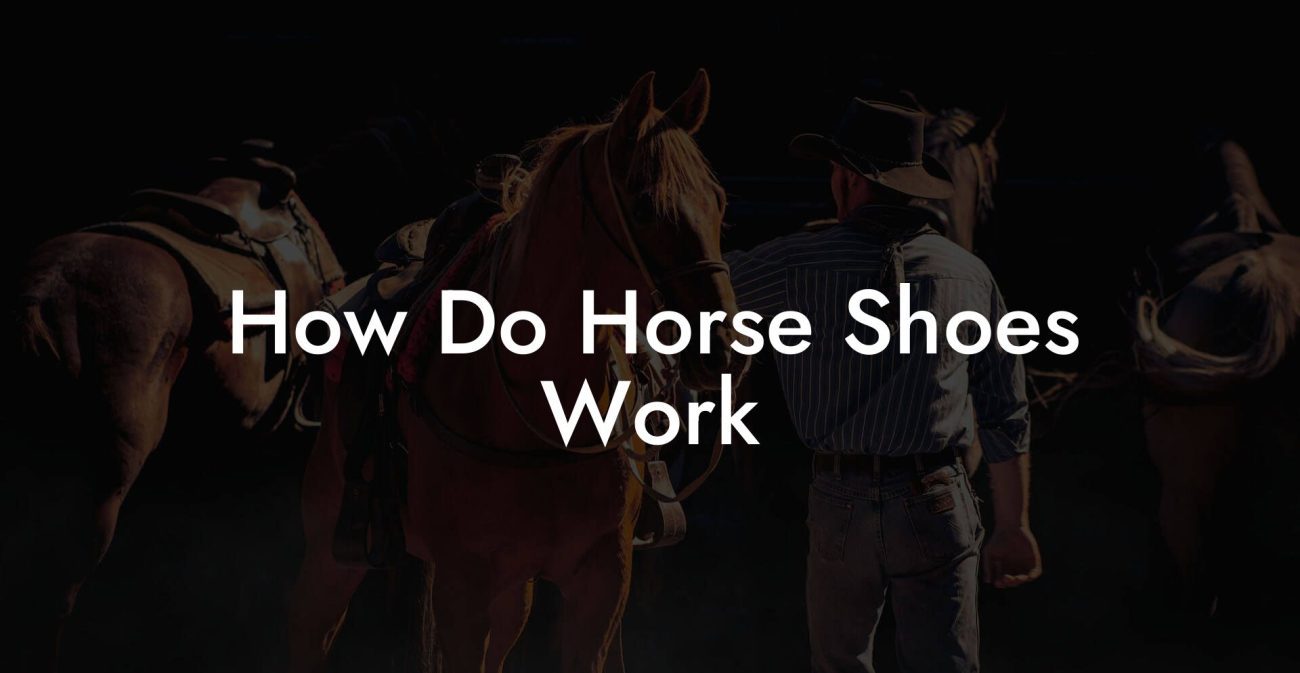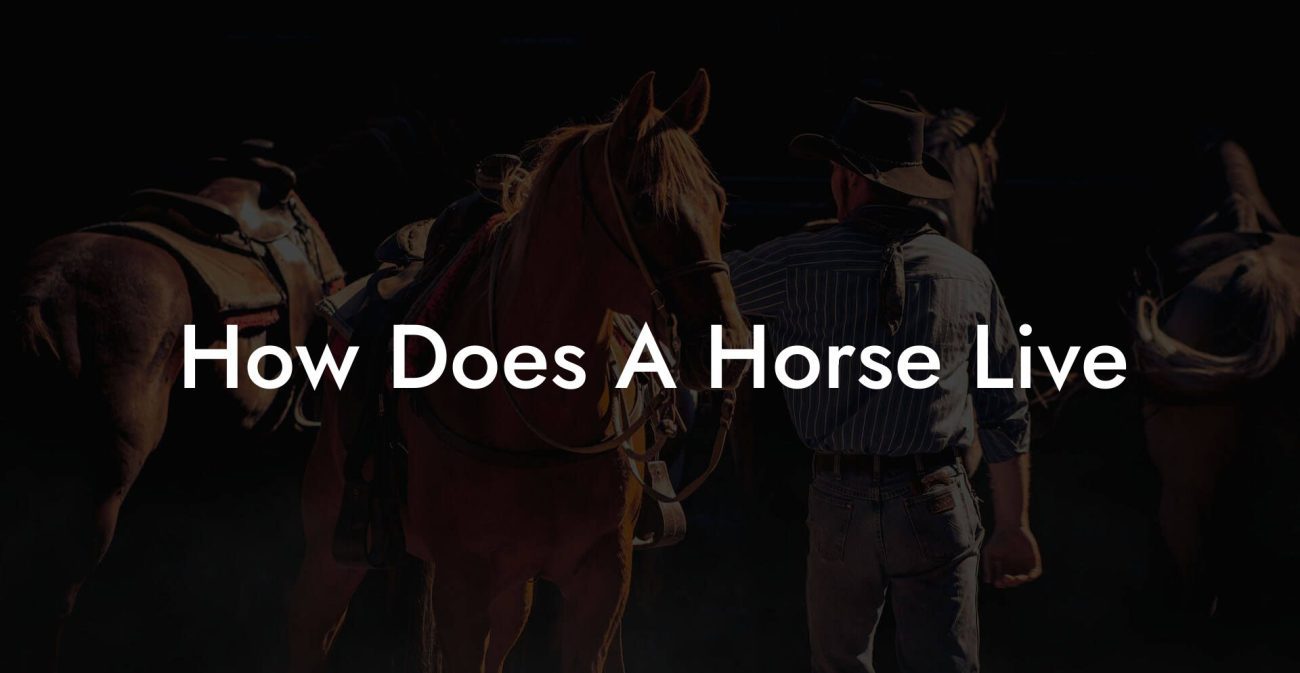Ever wondered what the secret is behind a horse’s flowing, dramatic mane, a cascade of silky strands that seems to defy gravity and time? Whether you’re a seasoned equestrian or a curious millennial scrolling through Insta reels of majestic horses galloping under a summer sky, understanding the mane is like unlocking a hidden chapter of your horse’s personality and well-being. This guide isn’t just another lecture on tack and turnout; it’s a wild ride into the art and science of mane care, blending expert tips, a dash of humor, and plenty of know-how to keep your four-legged best friend looking fierce and feeling fabulous.
Quick Links to Useful Sections
- What Is A Horse Mane?
- History and Evolution: The Legacy of the Horse Mane
- The Anatomy of a Horse Mane: More Than Just Hair
- Why Proper Mane Maintenance Matters
- Types of Horse Manes: Embracing Natural Diversity
- 1. The Long, Flowing Mane
- 2. The Sleek, Short Mane
- 3. The Curly Mane
- 4. The Patchy or Sparse Mane
- Grooming Basics: Tools and Techniques for Mane Mastery
- Essential Grooming Tools
- Basic Grooming Techniques
- Advanced Mane Grooming: Techniques for the Daring and Detail-Oriented
- Braiding and Plaiting
- Manicure for Manes: Trimming and Shaping
- Color and Highlights
- Heat Styling (With Caution!)
- Caring for Your Horse’s Mane Year-Round
- Summer Mane Maintenance
- Winter Care Tips
- Spring and Fall: Transition Periods
- The Role of Nutrition and Overall Health in Mane Quality
- Common Mane Problems and How to Fix Them
- Matting and Tangling
- Dryness and Brittleness
- Excessive Shedding or Breakage
- Innovative Grooming Tools and Techniques to Elevate Mane Care
- DIY Mane Care: Home Grooming Tips for the Hands-On Equestrian
- Professional Grooming: Knowing When to Call the Experts
- The Intersection of Mane Care and Community: Resources and Support
- Integrative Approaches to Horse Mane Care: More Than Skin Deep
- Mane Maintenance Myths: Busted!
- FAQ: Your Most Pressing Horse Mane Care Questions Answered
- Your Journey to Masterful Horse Mane Care
What Is A Horse Mane?
A horse mane is far more than just a head-turner on Instagram, it’s an essential part of your equine companion’s identity and functionality. Found along the top of a horse’s neck, the mane serves several important roles. Not only does it provide natural protection from the sun and insects, but it also contributes to a horse’s overall thermal regulation. The mane is made up of keratin, the same protein that builds your hair and nails, and can vary in texture, density, and growth patterns from one horse to the next.
Whether your horse sports a long, flowing mane that makes every gallop look like a scene from a movie or a sleek, short style that’s practical and low-maintenance, understanding its nature is the first step toward providing top-notch care. By embracing both the artistry and the science of mane maintenance, you can transform grooming sessions into bonding rituals that benefit both you and your equine pal.
History and Evolution: The Legacy of the Horse Mane
The horse mane has played a vital role in equine evolution, transforming from a clever bit of natural insulation to a canvas for fashion and function. In the wild, a thick mane served as protection against biting insects, harsh weather, and even rival horses. As our equine partners became domesticated, human hands began to shape the mane, not just as a practical accessory but as a form of expression for breeds and owners alike.
Today, the way you groom your horse’s mane can tell a story about tradition, pride, and even the latest trends at the riding arena. From the iconic braided styles seen in parade horses to the natural, wind-tousled look cherished by endurance riders, the mane continues to evolve alongside modern equestrian lifestyles.
This blend of function and flair encapsulates the very essence of what a horse mane is, a living, breathing statement of heritage, personality, and care.
The Anatomy of a Horse Mane: More Than Just Hair
To properly care for your horse’s mane, it’s important to understand what makes it tick, literally. The mane is composed of individual hair fibers that are rooted in follicles, much like the hair on your head. These fibers are nourished by a rich supply of nutrients delivered through the bloodstream, which is why diet and overall health greatly influence its quality.
The structure of the mane is designed to be both resilient and adaptable. It can withstand a surprising amount of wear and tear from the elements, everyday activities, and even the occasional mischievous tug from a playful foal. Yet, despite its durability, the mane demands regular attention to maintain its natural shine and strength.
When tackling mane care, remember that every strand is interlinked with the horse’s overall health. A mane that is dull, brittle, or matted might be signaling that it’s time to examine nutrition, grooming techniques, or even the weather conditions affecting your horse.
Why Proper Mane Maintenance Matters
Think of a well-cared-for mane as the crown of your horse’s head, both a shield and a showstopper. Regular mane maintenance isn’t just about aesthetics; it’s a critical component of overall equine care. Here’s why:
- Protection: A healthy mane helps shield your horse’s neck from sunburn, insect bites, and environmental pollutants.
- Temperature Regulation: The mane acts as a natural insulator, helping horses manage body temperature in extreme weather.
- Comfort: Proper grooming prevents painful matting and tangles that could irritate the skin or pull on the hair follicles.
- Performance: For horses involved in competitions or frequent riding, a well-maintained mane can reduce drag during movement and even improve the overall balance of the horse’s appearance.
- Bonding Time: Grooming the mane isn’t just a necessity, it’s an opportunity to deepen the connection between you and your horse.
In short, ignoring mane care can lead to discomfort, decreased performance, and missed opportunities to truly bond with your equine partner.
Types of Horse Manes: Embracing Natural Diversity
Just as no two horses are exactly alike, their manes come in a delightful array of styles and textures. Recognizing and embracing these differences is essential for tailoring your care techniques.
1. The Long, Flowing Mane
Imagine the mane of a wild mustang or a show horse drifting in slow motion, this is the long, flowing mane. It exudes elegance and grandeur but requires a bit more TLC. Regular detangling, careful washing, and cautious drying are essential to maintain its beauty.
2. The Sleek, Short Mane
Sporting a short mane is all about practicality and ease of maintenance. These manes are less prone to tangling and matting, making them ideal for horses that are always on the move or for riders who aren’t fans of long grooming sessions. The sleek look is modern, minimalistic, and requires just the basics: a quick comb-through and a touch of detangler.
3. The Curly Mane
Some horses naturally boast a curly or wavy mane, reminiscent of a coiffed ‘do ready for a fashion runway. While these manes have a unique, playful personality, they can be a bit more challenging to maintain. Special conditioners and curl-enhancing products can help keep curls defined and frizz at bay.
4. The Patchy or Sparse Mane
Not all manes are full and thick, and that’s okay. A patchy mane can be natural or the result of genetics and environmental factors. Focus on nourishing the available hair with quality supplements and gentle grooming to promote healthy growth.
Regardless of the type, every mane deserves individualized care that respects its natural texture and unique quirks. Tailor your routine to what makes your horse’s mane truly shine.
Grooming Basics: Tools and Techniques for Mane Mastery
Just as you wouldn’t try to give yourself a haircut without the right tools, caring for a horse’s mane requires a well-stocked grooming kit and a bit of know-how. Let’s break down the essential items and techniques every modern groom should have in their arsenal.
Essential Grooming Tools
- Wide-Tooth Comb: Perfect for detangling without causing breakage. Use it to gently work through knots and mats.
- Hoof Pick and Brush: While primarily used for hooves, these can help remove debris from the base of the mane.
- Conditioning Shampoo: A gentle, pH-balanced shampoo designed specifically for horses ensures that the mane stays clean without stripping away natural oils.
- Leave-In Conditioner or Detangler: This is a lifesaver for long manes prone to tangles, helping maintain softness and shine.
- Scissors and Trimmers: For precise mane trimming or for creating a particular style, a pair of grooming scissors should be part of your toolkit.
Investing in high-quality products is key, not only do they ensure that your horse looks good, but they also maintain the health and integrity of the mane.
Basic Grooming Techniques
Begin by standing your horse in a calm, safe area, ideally with a helper if your equine friend is a bit skittish. Start with a thorough brushing to remove any loose dirt and debris. Once the mane is detangled, apply a small amount of leave-in conditioner or detangling spray and gently comb through the hair again.
For horses with longer manes, consider washing them every few weeks using a specially formulated shampoo. Rinse gently with lukewarm water and avoid vigorous rubbing, which can lead to breakage. Instead, pat the mane dry with a clean towel, and if necessary, use a low-heat setting on a hair dryer kept at a safe distance. Finally, brush lightly once more to ensure a smooth finish.
Advanced Mane Grooming: Techniques for the Daring and Detail-Oriented
For those looking to elevate their mane game, advanced grooming techniques can transform an ordinary mane into a work of art. Whether you’re preparing for a competition or simply enjoy the creative process, the following tips can help you achieve salon-worthy results.
Braiding and Plaiting
Braiding isn’t just for human hair, horses can rock braids that are both practical and stylish. Braiding can serve as a protective style, reducing tangles, and keeping the mane neat during long rides and events. Experiment with different braid patterns, such as French braids or fishtails, to add an extra layer of flair.
Manicure for Manes: Trimming and Shaping
Much like a well-executed hairstyle, shaping your horse’s mane can affect its overall look and feel. Use grooming scissors with precision, taking care to trim away split ends and excess length that might tangle. For competitions, maintaining a uniform length or style can be part of the overall presentation and even help with aerodynamics during a fast gallop.
Color and Highlights
Feeling bold? Some modern grooms experiment with natural, horse-safe dyes to enhance the mane’s color. Whether it’s subtle highlights to make the mane pop or an all-over tint, always consult a veterinarian or an equine grooming specialist before applying any chemicals. Natural products like herbal rinses are increasingly popular among those wanting a safe yet striking effect.
Heat Styling (With Caution!)
If you’re tempted to use a hair straightener or curling iron on your horse’s mane, think twice. Unlike human hair, a horse’s mane is thinner and more sensitive to heat damage. Save the heat styling for a low-heat dryer session, and only if your horse is completely comfortable with the process. Consider this an advanced technique reserved for those with plenty of experience and the proper professional-grade tools.
Combining these advanced grooming strategies with your regular care routine not only results in a mane that looks spectacular but also builds a stronger, more trusting bond between you and your horse.
Caring for Your Horse’s Mane Year-Round
Just like us, horses experience seasonal changes that can affect their hair. From winter’s chill to summer’s blazing sun, each season brings its own set of challenges and solutions for mane care.
Summer Mane Maintenance
The heat and humidity of summer can leave a horse’s mane feeling heavy and prone to tangling. Regularly detangling and keeping the mane clean is essential to prevent sweat and dirt from building up. Fly sprays and natural repellents come in handy too, ensuring that pesky insects don’t turn grooming time into a battle.
Winter Care Tips
Winter can be harsh, cold winds, snow, and even the use of heavy blankets all influence mane health. Dry air may lead to brittle hair, so deep conditioning treatments and a bit more frequent brushing can fend off breakage. Ensure that your grooming routine is gentle and that you protect your horse’s mane from the elements when possible by using protective coverings.
Spring and Fall: Transition Periods
As the weather shifts, so do the needs of your horse’s mane. These transitional periods are ideal for a thorough grooming session, a natural trim, or even a spa day that combines a deep wash with a conditioning treatment. Use these seasonal changes as an opportunity to reset your horse’s grooming routine.
Adapting your mane care to the rhythms of nature not only keeps your horse looking its best all year but also ensures that the mane stays healthy, strong, and ready for whatever adventures lie ahead.
The Role of Nutrition and Overall Health in Mane Quality
It’s easy to think that a magnificent mane is purely the result of external grooming, but what your horse eats and how it’s cared for overall play a huge role in mane quality. Just as humans benefit from a balanced diet for shiny hair, horses need nutrients to support robust mane growth.
A diet rich in high-quality proteins, omega fatty acids, and essential vitamins (like biotin) can have a tremendous impact on the mane’s appearance. Supplements designed for equine health can also enhance hair strength and shine. Regular veterinary check-ups, plenty of fresh water, and a bit of pampering after a long ride can all lead to a mane that not only looks fabulous but also signals your horse’s wellbeing.
Remember, the mane is a mirror of the overall health of your horse. By ensuring a nutritious diet and regular exercise, you’re doing more than just grooming, you’re investing in a healthier, happier equine companion.
Common Mane Problems and How to Fix Them
Even with the best care, every horse may experience mane issues at some point. Knowing what to look out for and how to remedy common problems is crucial for keeping your horse’s mane in peak condition.
Matting and Tangling
One of the most common mane problems is matting. Whether it’s due to environmental factors, infrequent grooming, or even just a particularly active day at the arena, mats can develop quickly. The solution? Prevention is key. Regular combing and brushing, along with the use of detangling sprays, can work wonders in keeping mats at bay. For stubborn tangles, gently work through the knots by hand, starting from the bottom and gradually moving upward.
Dryness and Brittleness
A mane that feels dry or brittle may need extra moisture. Deep conditioning treatments, natural oils (like coconut or argan oil), and hydrating shampoos can restore flexibility and shine. Be cautious with heat drying, as excessive warmth can further dehydrate the hair.
Excessive Shedding or Breakage
If your horse’s mane is shedding more than usual or breaking easily, it could be indicative of nutritional deficiencies or damage from rough grooming techniques. Revisiting your horse’s diet and gently reviewing and updating your grooming methods can help correct these issues. In some cases, it might also be wise to consult with a vet to rule out any underlying health issues.
Tackling these challenges early on not only preserves the mane’s appearance but also reduces the risk of discomfort for your horse.
Innovative Grooming Tools and Techniques to Elevate Mane Care
Advances in technology and grooming products have introduced a new level of sophistication to equine care. Today’s market is brimming with innovative tools designed to bring out the best in your horse's mane.
For instance, portable grooming kits equipped with ergonomic designs make it easier to reach every angle on a restless horse. There are also specially formulated sprays that not only detangle but also protect the mane from UV rays, maintaining its vibrant sheen even under the harsh summer sun. Some tech-savvy equestrians are even using smartphone apps to schedule grooming sessions and track changes, ensuring that every strand receives the proper attention.
Integrating these modern techniques with time-honored practices can lead to a personalized grooming regimen that’s both effective and enjoyable. Embrace the evolution of mane care to create a routine that fits seamlessly into your busy, trendsetting lifestyle.
DIY Mane Care: Home Grooming Tips for the Hands-On Equestrian
Sometimes, the best mane care happens right at home. For those who love rolling up their sleeves and getting involved in every step of their horse’s care, these DIY tips will come in handy.
- Pre-Grooming Prep: Before you even touch the mane, make sure your horse is calm and comfortable. A few minutes of gentle petting or even a favorite treat can set the tone.
- Create a Relaxing Environment: Choose a quiet spot and play some chill tunes to relax both you and your horse. A calm environment can make grooming sessions feel like a spa day rather than a chore.
- Water and Conditioning: Start with a light water spritz to dampen the mane, then work in a small amount of conditioning shampoo. This prepares the hair for easier combing.
- Detangle Gently: Use your fingers first to loosen any knots before reaching for a comb. This minimizes breakage and pain.
- Daily Touch-Ups: Even a quick comb-through at the end of the day can make a huge difference in preventing matting.
These simple, at-home routines not only keep your horse looking sharp but can also become a cherished part of your daily bonding time.
Professional Grooming: Knowing When to Call the Experts
While DIY mane care is incredibly rewarding, there are times when you might need the help of a professional groomer. Professional grooming services bring expertise, specialized products, and tools that you might not have on hand at home.
Consider professional assistance when you notice severe matting, persistent tangles that just won’t budge, or if you’re preparing your horse for a major competition or show. Groomers can perform precision trims, deep-conditioning treatments, and even styling that aligns with the latest trends in the equestrian world.
Knowing when to call in a pro is a key part of responsible equine care. It ensures that your horse’s mane remains a symbol of health and beauty, while also giving you a chance to learn new techniques and tips from industry experts.
The Intersection of Mane Care and Community: Resources and Support
In today’s digital age, you’re never far from a community of like-minded equestrians. Whether it’s through social media groups, local stables, or online forums, sharing mane care tips and experiences is a fabulous way to stay updated on the latest trends and innovations.
Consider exploring these resources as your next step in mastering mane care:
- Online Forums: Platforms like The Horse Forum or Reddit’s r/equestrian offer a treasure trove of tips, tricks, and success stories from fellow horse owners.
- Social Media Influencers: Follow top equine groomers and veterinarians on Instagram and TikTok to watch live demos and get inspired by creative grooming ideas.
- Local Grooming Workshops: Check with your local equestrian centers for grooming clinics or workshops that provide hands-on training.
- Books and Online Articles: Dive into literature that covers everything from basic grooming to advanced styling techniques. These can be invaluable resources for both novices and seasoned grooms.
Embracing community support not only enhances your grooming skills but also builds lasting relationships with fellow horse lovers. Sharing your journey and learning from others creates a supportive network where success is celebrated and challenges are overcome together.
Integrative Approaches to Horse Mane Care: More Than Skin Deep
Just as holistic care is changing perspectives in human wellness, an integrative approach to horse mane care involves looking beyond the hair itself. It’s about considering the interplay between nutrition, overall health, stress levels, and environmental factors that ultimately influence mane quality.
For instance, a well-balanced diet rich in proteins and essential vitamins doesn’t just nurture a healthy body, it also supports robust hair growth. Regular exercise, adequate hydration, and even seasonal adjustments all contribute to mane vitality. This integrative approach means considering your horse’s entire lifestyle, ensuring that every aspect, from feed to grooming, works together to create a mane that’s as striking as it is healthy.
Think of it as a full-spectrum approach, where every grooming session, every nutritious meal, and every quiet bonding moment plays a part in maintaining your horse’s natural beauty.
Mane Maintenance Myths: Busted!
The equestrian world is rife with myths about mane care. Let’s debunk a few so that you can confidently care for your horse without falling for common misconceptions:
-
Myth: You should never wash your horse’s mane.
Reality: Washing removes dirt and buildup. The key is using a gentle shampoo and ensuring proper drying. -
Myth: A thick mane is always healthier than a thin one.
Reality: Mane density is often a genetic trait. It’s the quality and care that matter most. -
Myth: More frequent washing always equals better care.
Reality: Overwashing can strip natural oils. Balance is key. -
Myth: Horse hair products are interchangeable with human hair products.
Reality: Horses have different pH levels and sensitivities, stick to products formulated for equine care.
Dispelling these myths is crucial to developing a grooming routine that is both effective and healthy for your horse.
FAQ: Your Most Pressing Horse Mane Care Questions Answered
We’ve gathered some of the most frequently asked questions about horse mane care to help clear up any uncertainties and empower you with the knowledge to make the best grooming decisions.
1. How often should I groom my horse’s mane?
For most horses, a daily comb-through and a weekly wash with a gentle shampoo works wonders. However, if your horse is particularly active or prone to tangles, you might need to adjust the frequency based on its individual needs.
2. What is the best tool for detangling a mane?
A wide-tooth comb is typically ideal. It allows you to gently work through knots without causing breakage. For stubborn mats, your fingers are your best first line of defense before employing a comb.
3. Can I use human hair products on my horse?”
It’s best not to. Horses have different skin pH and hair structures, so using horse-specific shampoos and conditioners is recommended to avoid irritation and damage.
4. How can I maintain a natural, windblown look for my horse’s mane?
Embrace nature by adopting a less-is-more approach. Occasional washing, minimal use of conditioners, and letting the mane air-dry are key techniques to achieve that effortless, windblown style.
5. What should I do if my horse’s mane is constantly matting?
Regular grooming, the use of a detangler, and conditioning treatments can help. If problems persist, consult a professional groomer to assess whether there might be an underlying health issue or if a different grooming strategy is needed.
6. Are there specific diets or supplements that promote a healthier mane?
Yes, a balanced diet rich in protein and omega fatty acids, along with supplements such as biotin, can improve hair strength and shine. Always check with your vet before adding new supplements.
By staying informed and proactive, you can ensure that mane care isn’t just a chore, it’s a gratifying part of your horse’s overall well-being.
Your Journey to Masterful Horse Mane Care
Embracing the art of horse mane care is like stepping into a realm where practicality meets personality. With each gentle comb, every nourishing wash, and even the occasional creative style session, you’re not only preserving the natural beauty of your horse but also strengthening the bond you share.
This guide provides the roadmap to navigate the intricate world of mane care, from understanding its fundamental role to exploring advanced grooming techniques that let your horse shine, both literally and figuratively. Every tip, every expert-backed recommendation, and every community-sourced hack builds toward a holistic approach that values both tradition and innovation.
And remember, the journey to an awe-inspiring mane is as enriching as the destination. Each grooming session is an opportunity to learn more about your horse’s unique personality, health, and style. With the right tools, tips, and a pinch of creativity, your mane care routine can be transformed into a cherished ritual, a daily celebration of the grace, strength, and natural beauty of your equine partner.
So gear up, dive into a world of grooming mastery, and let your horse’s mane tell a story of care, connection, and undeniable style. Your journey to masterful horse mane care begins now, elevate your routine, inspire others, and revel in the endless possibilities that each strand holds.













